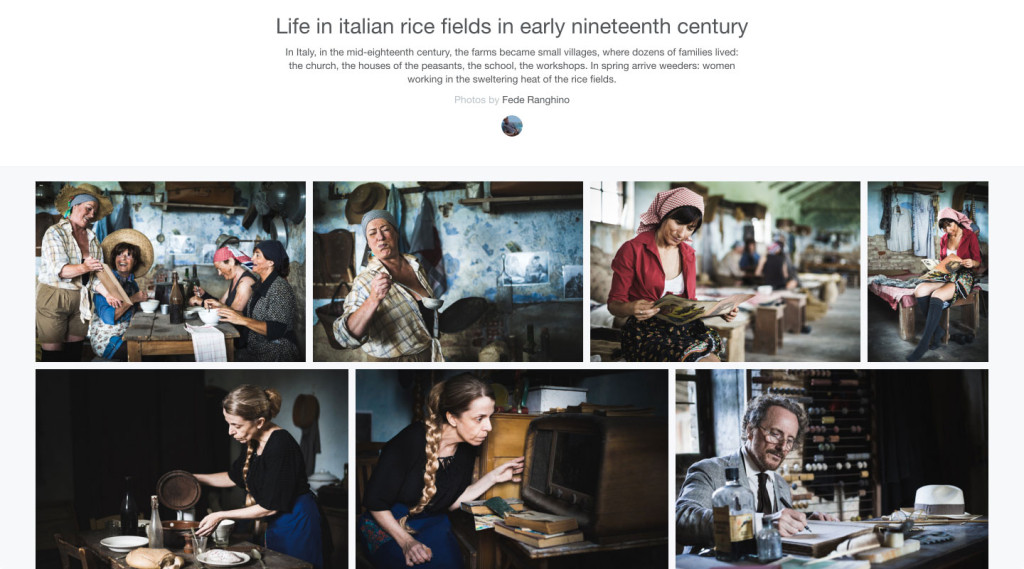At the beginning of the 19th century, seasonal workers in the rice fields were mainly women and were called “Mondina” or “Mondarisa” in Italian (the verb “Mondare” means to clean). The work took place in the spring (from April to June) when the rice fields were flooded to protect the delicate rice plants from the thermal jump between day and night. The work consisted of transplanting the plants in the “monda,” a very tough job for these women. They had to spend days on end, barefoot and bent over in knee-deep water to get rid of the weeds that were slowing down the growth of the rice plants. Today that job has been replaced by weedkillers (herbicide).
This profession inspired the collective imagination, as well as many popular songs, books and movies. Despite the harsh working conditions against which there were many strikes in early 1900s, the woman were known to sing a lot during their working hours to raise morale.
Italian photographer Federico Ranghino is the latest in a long line of artists to document the life of these workers. He is from Vercelli which is one of the most important rice zones in Italy. He describes the conditions himself:
In Italy, in the mid-eighteenth century, the farms became small villages, where dozens of families lived: the church, the houses of the peasants, the school, the workshops. In spring arrive weeders: women working in the sweltering heat of the rice fields.
Federico used the Sony A7 mark II and vintage lenses like the Yashica ML 50mm f1.4 to recreate the atmosphere of those times. We like this series because it shows a sense of humour and a willingness to smile even in the face of hardship.
You can check out the entire image gallery on Federico’s 500px page here.

